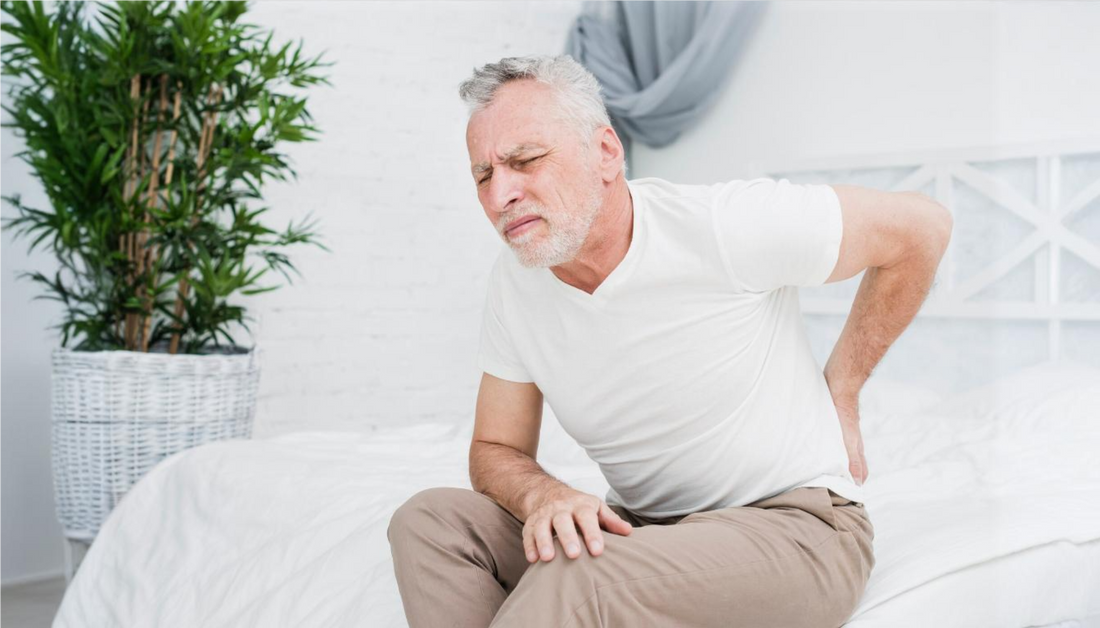Understanding Osteoporosis Symptoms, Causes, and Everything You Need to Know

Many of you might not have heard about osteoporosis, but you should know what it does to your body if you don’t care about it. Osteoporosis is known to many as the ‘silent killer’ since most people will not be aware of the disease until when they get to fracture themselves. This is a condition that is common in the elderly age group with millions of people suffering from it and there is need for the condition to be taken care of properly due to its serious consequences. In this blog, we will take a brief look at what the condition is, its signs, and the causes of the osteoporotic disease, and present the basics that every patient suffering from this common although not well explored illness should know about it.
What Exactly is Osteoporosis
Osteoporosis is clinically considered as the condition of bone mass reduction involving a reduction in the mass of the osteoporotic bones which then becomes fragile. The derived steroidal illness Osteoporosis comes from two words: Osteopor which suggests bone hollowing; in acceptance small balls of chicken wire is usual of normal bone, in osteoporosis these balls get much larger, so as bone gets weaker. This causes excessive stress on the bones and the even smallest fall becomes lethal or in extreme, even a cough or a lean forward can cause fracture of the bone.
Does Osteoporosis Cause Pain?
The main concern that people have about osteoporosis is regarding the pain that comes with it, whether or not it is painful. The answer is yes and no: there is no direct pain with osteoporosis but the resulting fractures that come from weak bones can be very painful. For instance, neck fracture pain is persistent and located in the back, whereas hip fracture pain is localized in that area but also restricts movement of that region. In some cases, these open fractures may result in a long-term incapacitation stretching over 5 years.
I guess the most common and the first symptom of osteoporosis is, as expected, most cases related to pain fracture. But, this must be understood in that the disease does not manifest for few years at times and in such case there is every reason to understand why a person must go and seek medical attention to be screened and tested for bone density, more so the high risk patients.
Most Early Warning Signs of Osteoporosis
Because there aren't any clear signs in the early stages, osteoporosis is referred to as the “silent disease.” However, there are still several early warning signs that you should pay attention to:
Loss of Height
One of the earliest symptoms of osteoporosis is a progressive decrease in height over time. This occurs when vertebrae, which make up the backbone, may develop crumbling and lose their normal shape. This leads to loss of height.
Stooped Posture
Another sign could be a curving of the upper backbone that results in a hunched-over look, or a ‘dowager’ hump. This is common as a result of bone breaks in the vertebrae, making the spine bent and curved.
Bone Fractures
If for instance you always discover that you are developing fractures from some injuries that you doubt would have in any way affected the bones, then this is an indication that the bones are not strong enough.
Receding Gums
Osteoporosis can also affect the jaw bones, which will lead to the retraction of the gums. However, this is not a clear indication of a person developing osteoporosis but paying attention to this is important, particularly if one has other risk factors.
Weak Grip Strength
Many researches has shown that decreased grip strength is related to low bone density that is a possible indication that osteoporosis is on the horizon.
Major Symptoms of Osteoporosis
Frequent Fractures: The best indicator of the status of osteoporosis is the occurrence of bone fractures that frequently affect the hip, wrist, or spine. Most of these fractures arise from trivial incidents and can significantly alter an individual’s quality of life and ability to move.
Persistent Back Pain: It is common for osteoporosis to cause back pain, especially lower back pain or pain that radiates down the legs. Such is the case due to breaks in the twenty-four vertebrae of the spinal cord, which causes these bones to break resulting in pain and discomfort.
Hunched Posture: One of the more distinguishable symptoms of osteoporosis which however can only manifest if the disease has reached a somewhat severe stage; deformity of the spine that causes a till forward leaning of the body. This is as a result of compression fractures which occur in the spine or back.
Bone Weakness: Osteoporosis has many symptoms, but the most apparent and easy to understand is the sensation of bone tenderness, brittle-like, which can break easily.
Stages of Osteoporosis
This medical condition doesn’t happen overnight. It develops gradually, progressing through several stages of Osteoporosis:
Stage 1 - Peak Bone Mass: This stage is experienced during late adolescent stage, that is early adulthood after the growth spurt and completion of physical growth. This is the development period where if one wants to have strong bones, it requires taking adequate calcium and vitamin D.
Stage 2 - Early Bone Loss: As a person grows older, bone density also seems to decrease; it starts around age thirty. During this time, the constant loss of bone mass is minor and does not exhibit any prominent symptoms. However, it marks the beginning of what can develop into osteoporosis.
Stage 3 - Osteopenia: This process of loss of bone tissue is slightly below osteoporosis but is termed a phase in this disease process. Osteopenia according to WHO (2016) refers to reduced BMD compared with average values in healthy individuals but still higher than those diagnosed with osteoporo-sis. That’s why this signifies you need to act so as to prevent further depletion of body mass.
Stage 4 - Osteoporosis: A common presentation in elderly individuals during this period is extremely fragile and likely to fracture bones. Symptoms such as back pain, fractures and height changes are most likely to occur at this point.
Stage 5 - Severe Osteoporosis: The most severe stage of the condition is marked with serious signs and symptoms. The bones have turned very fragile or easily get fractured in other words. This stage may see even basic movements cause a fracture contributing greatly to reduced quality of life.
Causes of Osteoporosis
This disease is hereditary; however, there are those that may be caused by other factors which if adjusted the individual can eliminate.
Age: Age is one of the very important factors since as people gains age the number of the bones decreases progressively and this results to osteoporosis.
Gender: This is because estrogen is useful in retaining bone mass density and for this reason, women after menopausal bound to develop osteoporosis than men.
Family History: Osteoporosis also has a genetic attribute and this makes the disease to develop rapidly in anyone with a family gene.
Low Calcium Intake: If calcium levels are low, then bone density is low, bones are underweight and create formation of fractures.
Sedentary Lifestyle: The weakening of the bones is facilitated if a person takes foods that are not rich in calcium and engages in little or no activity like walking or weight lifting.
Smoking and Alcohol: It was also said that smoking and alcoholism have bad impacts about bones.
Hormonal Imbalances: This diseases is caused by the following factors; hyperthyroidism and low testosterone level in man.
Certain Medications: Osteoporosis is one of the conditions that may be caused by taking drugs such as corticosteroids that have effects on bone.
Osteoporosis: Prevention and Management
While osteoporosis can’t be completely prevented, there are several steps you can take to reduce your risk and manage the condition if you have it:
Calcium and Vitamin D: This has also been recommended to clients who consume a lot of fibre rich foods to exercise care too when consuming calcium and vitamin D. These nutrients are so important in the growth of the bones of the body being very important organs in our body.
Regular Exercise: Perform activities involving weights which put some stress on the bone like walking, jogging or weight lifting to support bone mass.
Healthy Lifestyle: Do not smoke and consume low amounts of alcohol to ensure that the bones are strong.
Bone Density Tests: One must get his or her bone density checked often so that osteoporosis is detected early and treatment is taken.
Bone Supplements: Bone supplements have always been an alternative to intrusive treatment options, however, choosing the right health supplement can also be germane. Choosing a supplement like CalStrong can be a great option since it provides express care against bone porosity in middle aged men or women.
Medications: If you are at a high risk or have been diagnosed with osteoporosis, further your doctor may recommend the use of drugs to help build up bone density and minimise the occurrence of fractures.
CONCLUSION
Osteoporosis is one of the diseases which threaten millions of people worldwide, especially the elderly. Adequate knowledge of osteoporosis symptoms, causes, and phases is necessary to detect it during the early stages and manage the disease effectively.
Some of the disease symptoms may include painful fractures and other related complications, however proper measures can be taken that may help in decreasing the chances of bone loss such as maintaining proper diet, exercise and alteration of certain activities. If you have concerns about osteoporosis, consult with your doctor on how you can go for a bone density check and have more information on how you can minimise bone loss and lead an active lifestyle.
No comments























0 comments